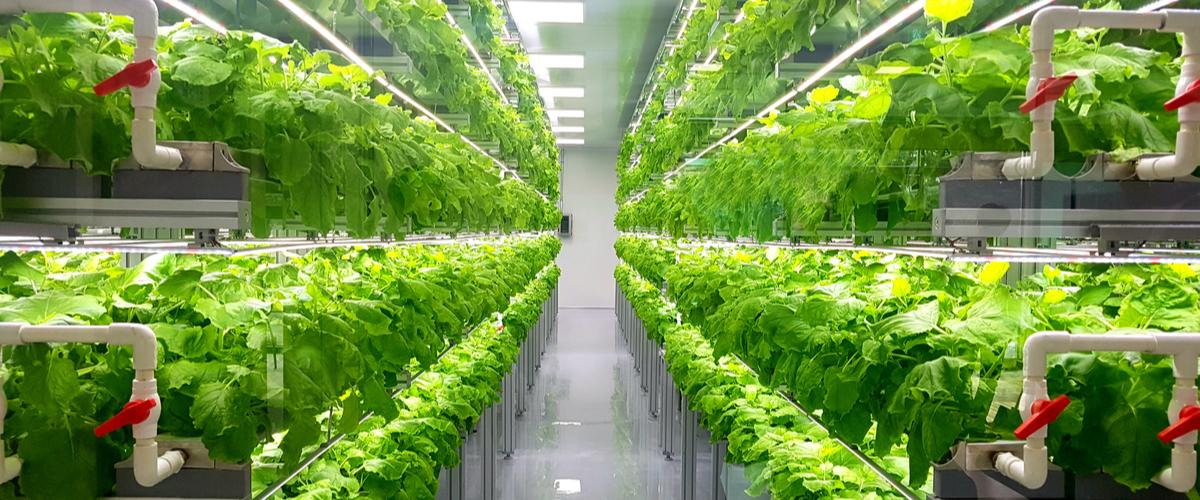- When it comes to developing new growing techniques, growers are becoming more creative every day.
- In this post we introduce you to vertical growing: a growing method that started off being used in the US a few years ago.
- Every square metre in the grow space is vital, and it seems that verticality can bring important benefits regarding the optimum production of your favourite plant… Follow the directions below!

Several years ago, cannabis vertical growing gradually emerged in some US states in the wake of cannabis legalisation.
It is clear that this growing method can provide many benefits in the legal market, where grow space and resources have a direct impact on the cost of production and therefore play a vital role in the economic viability of the cannabis industry.
The increasingly fierce competition in the cannabis sector is forcing its key players to innovate, which entails structural and conceptual changes in their way of working.
How to design a cannabis vertical grow

Cannabis vertical growing involves using up all the vertical space available in the grow area.
We are used to growing horizontally, but this option suggests working in a different way.
This type of growing requires the installation of a structure with different levels or shelves on which the grow tables are placed for the plants to sit on. These tables are normally rectangular and of identical size. The distance between them depends on the height available in the grow space.
The distance between the different levels must be equal, as this provides homogeneity and optimises overall flower production.
Lighting
LED lamps are frequently used in vertical growing due to their low energy consumption and heat emission, which allows you to place them close to the plants without worries.
This is the reason why LED lamps are ideal for superimposed cannabis plants in vertical grows. In addition, these lighting systems directly influence the air conditioning and ventilation systems, which will start up less frequently, leading to a decrease in energy consumption.
CMH/LEC lamps (CMH - Ceramic Metal Halide) offer the same advantages as LEDs but cannot be placed as close to the plants because of their size; therefore, more space would be required for this type of lighting to be used in a vertical grow.
HPS (High Pressure Sodium) lamps are not suitable for vertical grows except for cylindrical systems.
Irrigation
The design and installation of the irrigation system in a vertical grow entails complex and laborious work, especially on large-scale grows. The watering system needs to feed and moisten the cannabis plants on all levels with the aid of a lift pump, which requires professional installation.
The more levels in the grow, the more complex the irrigation system will be. Each plant is fed through an independent drip system which provides just the right amount of nutrient solution so every plant is fed appropriately and homogeneously.
Supplying the plants with all the required elements is vital, but the disposal of the nutrient solution residue in a closed circuit irrigation system also needs to be taken into account, especially on large-scale crops.
The correct management of the residue is a key factor in preserving the environment and respecting the regulations established by the institutions.
Air-conditioning and ventilation
The aim is to create a homogenous air distribution in the grow area. This is not a simple task in a vertical space because hot air naturally rises. This is the biggest issue, and finding a climate equilibrium in your grow space is paramount for the system to work correctly.
Strains
The best strains for vertical growing are medium-sized varieties that don't stretch too much height-wise; for instance, Bubba Kush.
It is also important to choose a productive, fast-flowering variety. This optimises the growing rhythm, the number of yearly crops, and the yields. These three criteria are essential and must always be taken into consideration.
It is best to choose Indica-dominant hybrids or strains with top yields. This is a crucial decision and is definitely critical for this type of project.
You also need to establish well-defined monovarietal production areas, or use strains with very similar characteristics to ensure homogeneous overall results.
Substrate

Rockwool blocks are used in most vertical grows, particularly because of their great aeration capacity, which accelerates the plant metabolism as a whole.
In addition to a well-managed irrigation system, rockwool also helps prevent the appearance of pests and diseases.
Another benefit of using rockwool is its weight: as it is a much lighter material, the infrastructure required is less complex and therefore less costly.
Soil is also used as the growing medium in some vertical grows, with good results.
Soil requires higher maintenance but also offers greater advantages thanks to its buffering effect. Nevertheless, it's not as suitable as rockwool for this type of growing technique.
Vertical growing benefits
The main advantages of this growing method are as follows:
- Full use of the vertical space.
- Increase in production.
- Acceleration of grow cycles.
- Optimisation of production costs.
- 50-60% overall energy saving.
Vertical growing drawbacks
The main disadvantages of this method are:
- Large initial investment.
- Difficulty in controlling environmental conditions.
- Higher accident risk.
- Need for maximum control of all the elements of the grow.
- High maintenance.
Main vertical growing systems
These are 3 of the main vertical growing systems:
1) Stacked vertical system
A stacked vertical setup is probably the most common method for cannabis vertical growing, as it is the simplest, most efficient, and most adaptable technique.
This method consists of setting up several superimposed levels with individual lighting and irrigation systems above each rack, for then stacking the plants on each level.
Depending on the available space on each rack, you can use clones and apply the SOG (Sea Of Green) technique, which will really shorten the growth phase.
If the distance between the shelves is greater, you can choose strains that stretch further, but you'll still need to top them or use other trimming techniques appropriate to each situation.
In order to promote bud development on the top part of the plants, pruning their lower leaves is essential. This must be done systematically and will help control size and optimise yields.
2) True vertical
With this growing technique, cannabis plants grow on the side of a column, where water is guaranteed by means of an irrigation method halfway between NFT (Nutrient Film Technique) and the classic aeroponics systems.
This growing technique facilitates optimum water and nutrient administration, and includes abundant oxygen to accelerate plant metabolism.
3) Cylindrical systems with central lighting
This system has been known for more than twenty years.

However, it has never been commercially successful because of its complexity for the average grower.
Plants are grown in a vertical cylindrical, sometimes rotating, hydroponics system. The only source of lighting comes from a single HPS lamp placed in the centre.
This system can prove really effective, but it does require very high control and maintenance, both of which are probably too challenging for the average grower.
The main problem with this type of vertical growing relates to irrigation: leaks can often appear, which can even lead to floods.
All these difficulties are clear proof of how we felt back in the early 2000s, when we all dreamt of finding 'one of those NASA lab systems' in our favourite growshop. But the dream remained just a dream, because in this case the harsh reality is accompanied by many disappointments…




Comments from our readers
There are no comments yet. Would you like to be the first?
Leave a comment!Did you like this post?
Your opinion about our seeds is very important to us and can help other users a lot (your email address won't be made public).